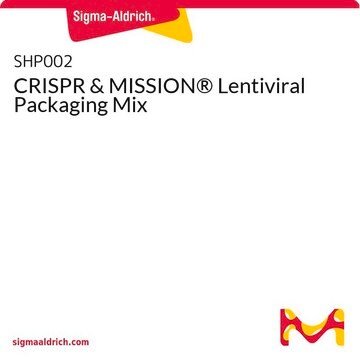CRISPR06
CRISPR UNIVERSAL NEGATIVE CONTROL 1
About This Item
Productos recomendados
form
liquid
packaging
vial of 50 μL
concentration
20 ng/μL in TE buffer; DNA (1μg of plasmid DNA)
application(s)
CRISPR
shipped in
dry ice
storage temp.
−20°C
Categorías relacionadas
General description
Application
- Creation of gene knockouts in cell lines
- Creation of knock-in cell lines with promoters, fusion tags or reporters integrated into endogenous genes
Features and Benefits
Components
Principle
Physical form
Preparation Note
which may not be suitable for transfection into particular cell types. For best results, we advise maxi-prepping
plasmids using endotoxin-free DNA purification kits prior to transfection.
Other Notes
Legal Information
Storage Class
12 - Non Combustible Liquids
wgk_germany
WGK 1
flash_point_f
Not applicable
flash_point_c
Not applicable
Certificados de análisis (COA)
Busque Certificados de análisis (COA) introduciendo el número de lote del producto. Los números de lote se encuentran en la etiqueta del producto después de las palabras «Lot» o «Batch»
¿Ya tiene este producto?
Encuentre la documentación para los productos que ha comprado recientemente en la Biblioteca de documentos.
Los clientes también vieron
Artículos
Validate CRISPR gene editing experiments easily with Sigma-Aldrich® T7E1 mismatch detection kit, ensuring successful editing.
Protocolos
Learn about CRISPR Cas9, what it is and how it works. CRISPR is a new, affordable genome editing tool enabling access to genome editing for all.
Nuestro equipo de científicos tiene experiencia en todas las áreas de investigación: Ciencias de la vida, Ciencia de los materiales, Síntesis química, Cromatografía, Analítica y muchas otras.
Póngase en contacto con el Servicio técnico


















